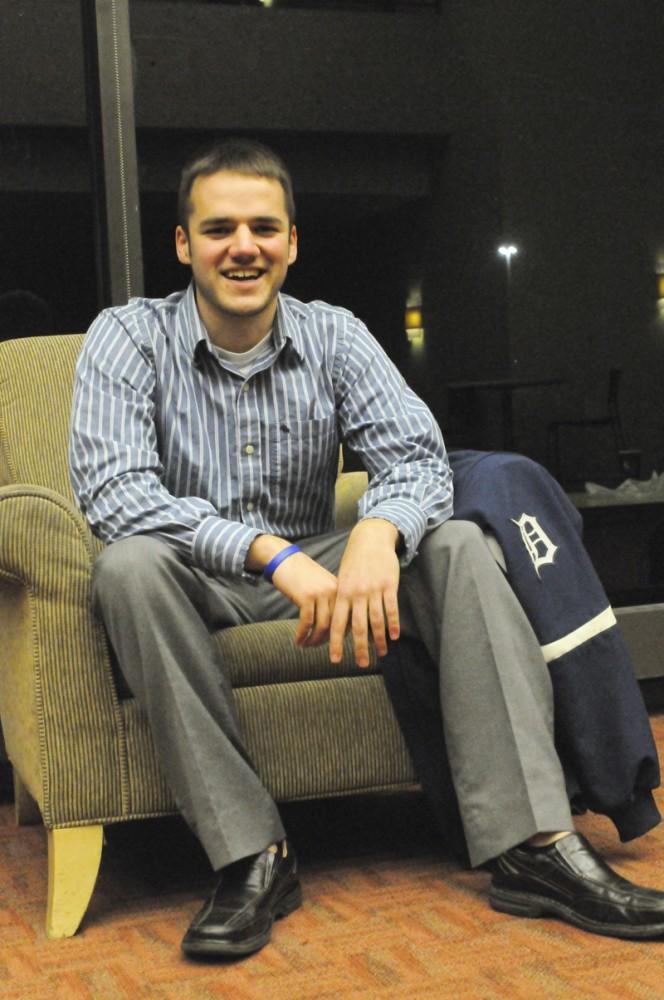COLLEGE CONVERTS

GVL/ Rane Martin Robbie Sullivan
Dec 8, 2011
Many students use college as a time for not only physical and mental transformation, but spiritual conversion, as well.
Sociology Professor George Lundskow said religious transformation during college is fairly common.
“In college, students often question many things, including their religious beliefs,” Lundskow said. “Since education in general tends to make people more liberal, students often adopt more liberal religious beliefs, and may consider different religions, but their religiosity usually stays the same.”
Although many people choose to convert during college, Lundskow said whether the conversion is beneficial or not depends on the individual.
Conversion is typical throughout many religions, including Catholicism, Judaism and Islam.
At Grand Valley State University, St. Luke’s University Parish takes on about two converts each year through a program called the Catholic Rite of Christian Initiation for Adults.
The parish RCIA instructor, Beth Price, said most people take anywhere from 18 months to two years to complete the training, with the length dependent on the religious background and personal motivation of the convert.
Those who have already been baptized, but still seek confirmation and want to celebrate their First Communion are called candidates, while those have neither been baptized nor celebrated the other sacraments are called catechumen.
Senior Robbie Sullivan underwent the RCIA process as a catechumen during his first year at Grand Valley State University. Throughout his six-month training, Sullivan spent an hour each week learning the scripture and tradition of the Catholic Church.
“College was the right time for my conversion,” he said. “I think people should always be trying to transform themselves into who they really are supposed to be. College is an especially good time for it, because it’s sort of a natural transition time in your life.”
Corey Erny, a GVSU freshman who is seeking confirmation, spends two to three hours each week on his religious studies.
“I think it is an excellent time to make the change,” he said.
His program will take about 18 months, ending with his final rite of initiation on Easter weekend of 2013.
“I spend approximately 30 to 45 minutes a week actually attending the RCIA program during Mass, but a part of the RCIA program is to learn as much as you can about the faith on your own,” he said.
Both Sullivan and Erny said the extra instruction time has not detracted from their studies at GVSU, but enhanced their overall education experience.
“If anything (the program) is a stress reliever,” Erny said. “It’s is a nice little break from life.”
Jewish converts undergo a similar training process during which they study Jewish history, scripture, rites and tradition under the direction of a Rabbi.
Professor Sheldon Kopperl, who was raised in the Jewish faith, said he thinks about two or three GVSU students convert to Judaism each year, but they do not all experience the same process.
Students study from a different handbook and participate in different initiation rites depending on whether they are entering Reform, Conservative or Orthodox sects of Judaism.
“Orthodox and Conservative rituals require immersion of both men and women into a bath (called “mikveh”) to achieve ritual cleanliness,” Kopperl said.
He added that the convert must also appear before a three-member court called a Beit Din, which evaluates a candidate’s readiness to join the Jewish community.
“One of the major rituals in all three movements is male circumcision at the age of 8 days,” Kopperl said. “For uncircumcised men who wish to convert, the Reform movement asks for a drop of blood to be taken from the foreskin. The Conservative and Orthodox movements require more invasive surgery.”
Kopperl said the physical transformation is somewhat of a “dis-incentive” for many men.
Another simpler spiritual conversion is offered by the Islamic religion.
Zeana Khodor, president of the Muslim Students Association, said converts to Islam need only to recite the Shadada, an Arabic line, to be recognized as a member of the Islamic community.
The line, part of a rite called the Declaration of Faith, translates into, “I bear witness that there is no god but God, and I bear witness that Mohammad is God’s servant and His Messenger.”
“After you recite that line, that’s it — you’re considered Muslim,” Khodor said. “You can do it with an Imam (religious leader) or it can be with friends. It doesn’t matter as long as you have witnesses.”
Because converts to Islam can choose a more private ceremony than RCIA members and Jewish converts can, the number of Islamic converts on GVSU’s campus is difficult to track.
For more information on the different faith-based groups at GVSU, visit www.gvsu.edu/studentlife/stuey.






















